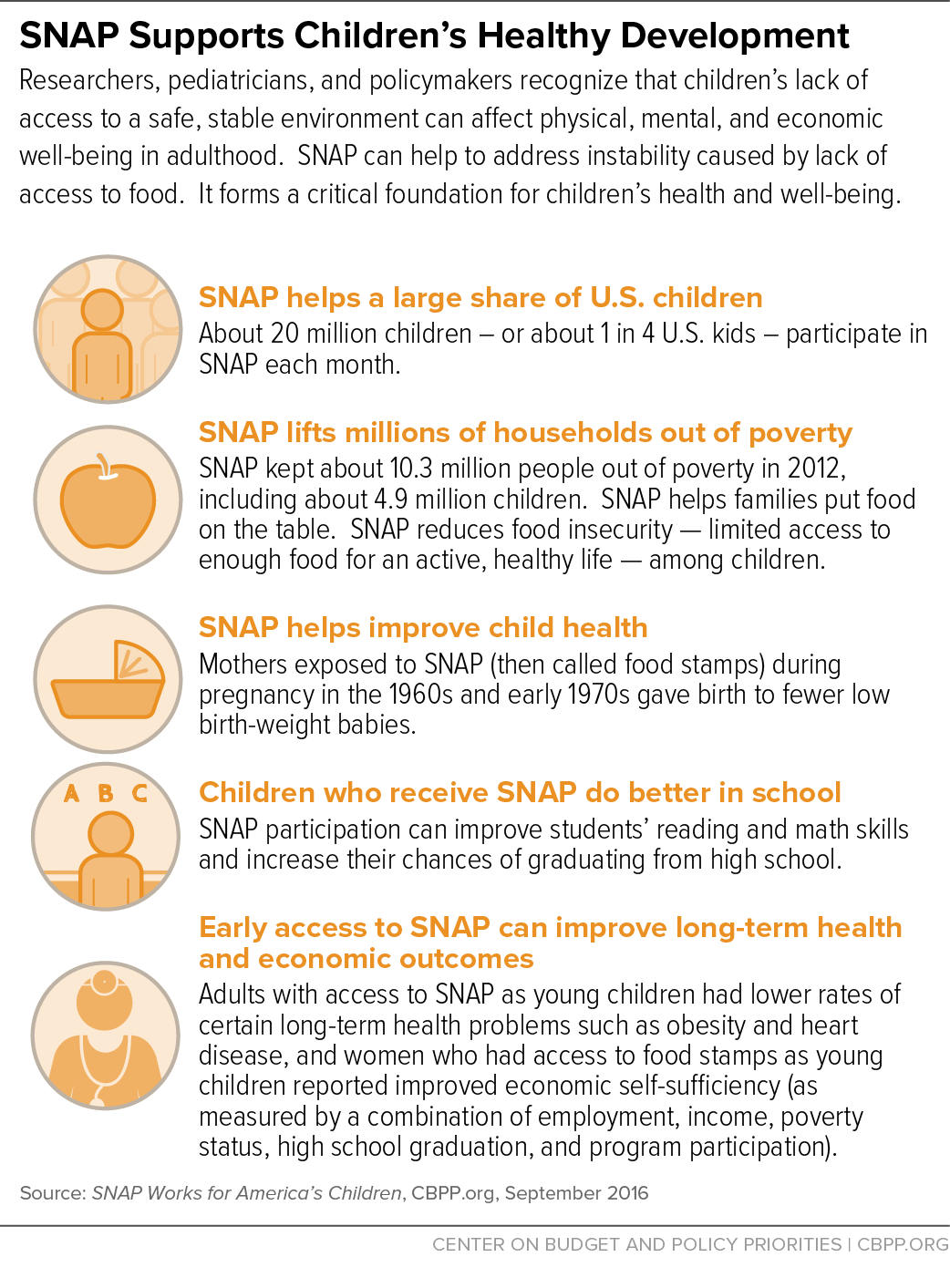BEYOND THE NUMBERS
The Supplemental Nutrition Assistance Program (SNAP, formerly food stamps) delivers more nutrition assistance to low-income children than any other federal program. While SNAP provides only a modest benefit of $1.35 per person per meal for families with children, it forms a critical foundation for children’s health and well-being, as our major new report explains.
Research shows that SNAP lifts millions of households out of poverty, helps families put food on the table, and improves children’s health. Children who get SNAP do better in school, and those with access to it early in life have better long-term health and economic outcomes. (See graphic.)
In 2016, SNAP will help about 20 million children each month — about one in four U.S. children — while providing about $30 billion in nutrition benefits for children over the course of the year.
Several important features of SNAP’s design contribute to its success. SNAP benefits are an entitlement, which means that anyone who qualifies under program rules can receive benefits; this enables it to respond quickly and effectively to increased need. And unlike most means-tested benefit programs, which are restricted to particular categories of low-income people, SNAP is broadly available to children in almost all families with little income and few resources. Also, SNAP targets assistance to families with the fewest resources available for food, and its rigorous requirements on states and recipients help ensure that benefits go only to eligible households and in the right amounts.
Click here to read the full paper.
In a series of posts next week we’ll give more details about the children receiving SNAP and the research on SNAP’s importance for them.

